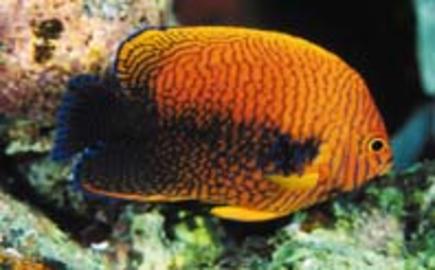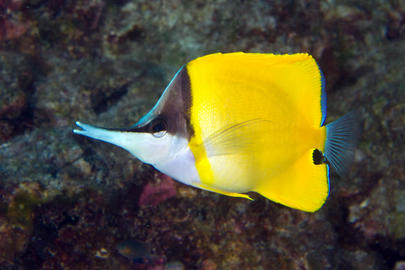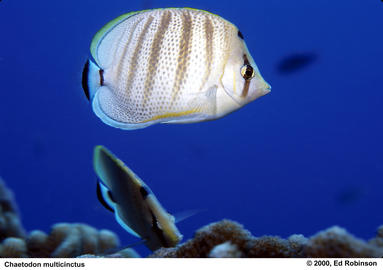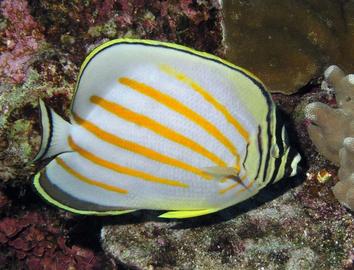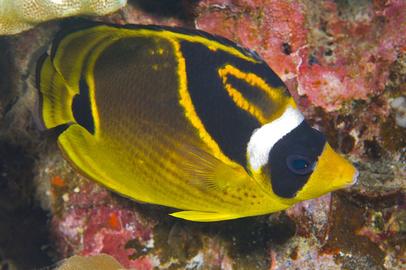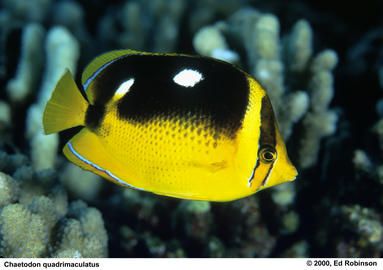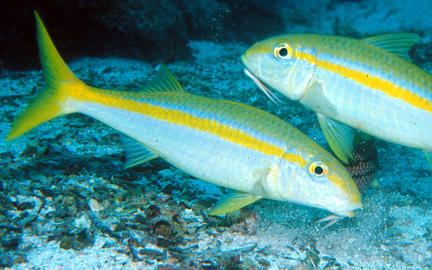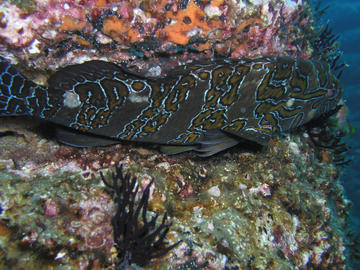Small angelfish that is bright to rusty orange on the top, fading to a bright blue area on the sides. Endemic to Hawaii.
Yellow body with white chin and chest. The snout is long and slender, and the mouth is open at the tip. Shouldn't be confused with the similar-looking Big Longnose Butterflyfish, which has a slightly longer snout.
Pale body with several brown bars that are widely spaced. Black band at base of tail. Endemic to Hawaii.
White head and body, often with some bluish tinting and fine markings. Also known as the Mexican goatfish.
Whitish spots often tinted yellowish to bluish; head and body reddish brown to gray ad greenish gray; no spots on fins.
Silvery with blue to blue-green to green tints on back; silvery white belly. Two thin blue lines on back and sides.
Medium to light olive to brown. Large, fat lips; tassels on tips of dorsal fin spines. Also known as the hieroglyphic hawkfish.

